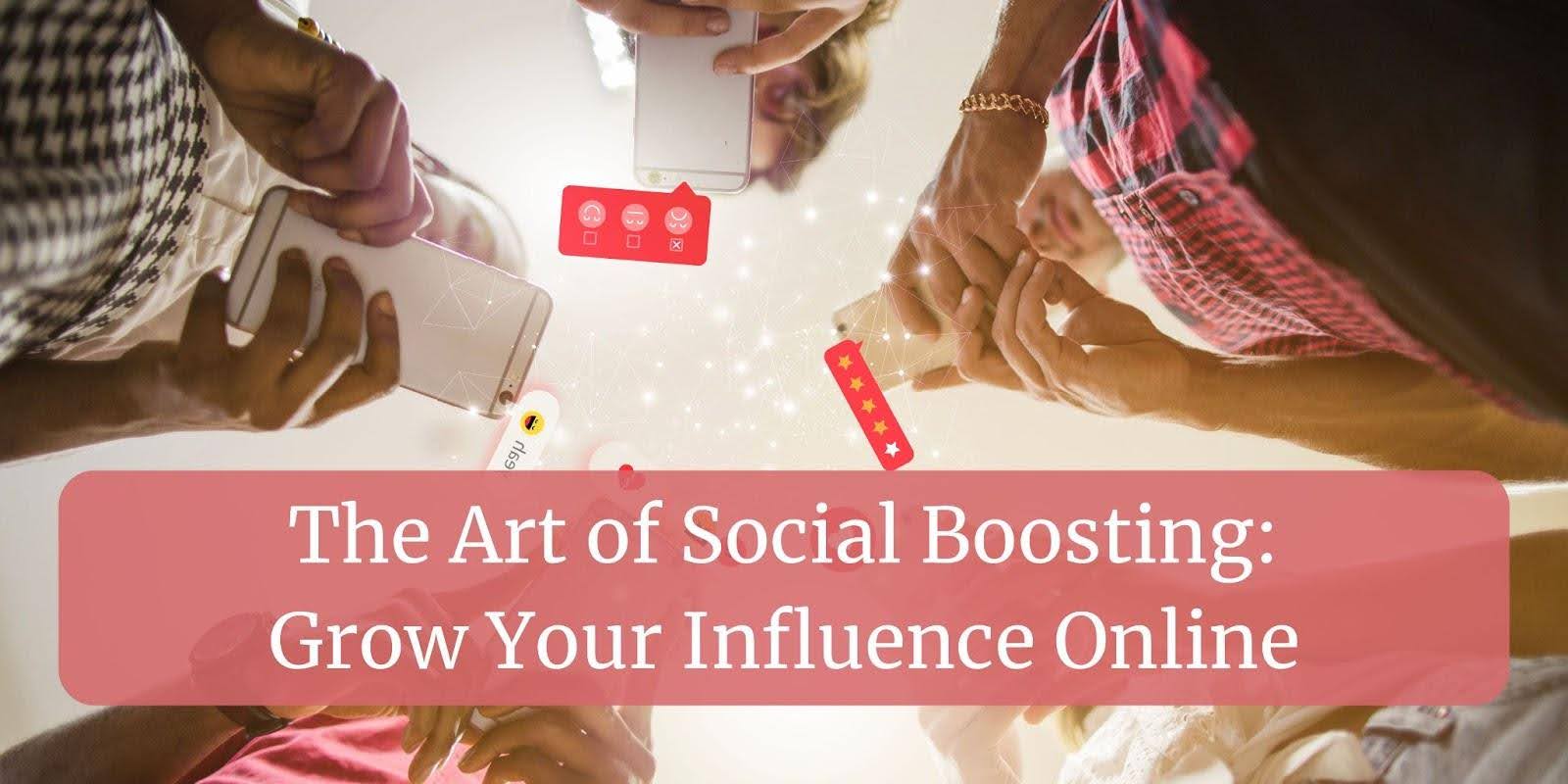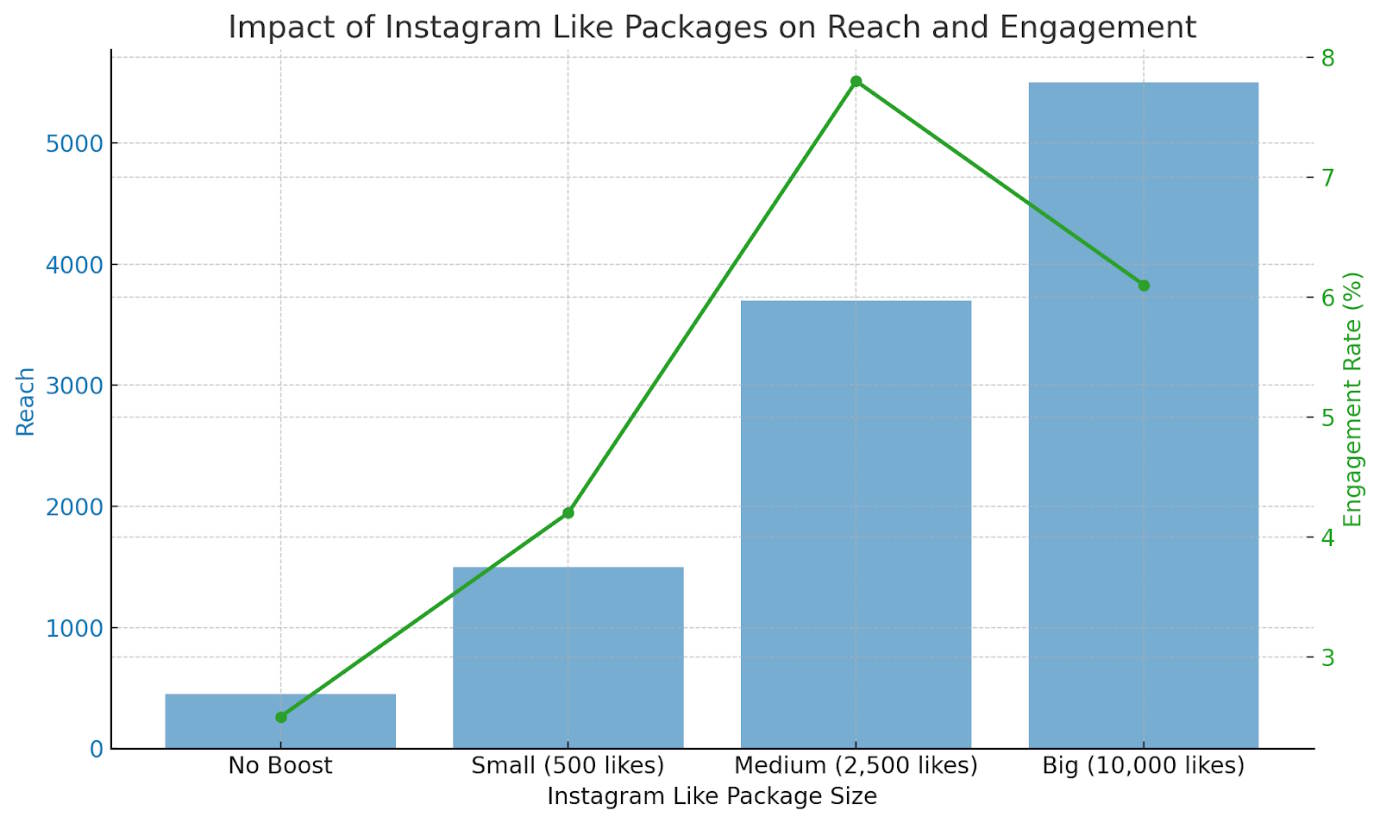The Art of Social Boosting: Grow Your Influence Online

When I was working with brands on content strategy, social media marketing felt easy, mainly because we were throwing big budgets at influencer partnerships, ad campaigns, and paid promotions. And to be honest, it worked. The numbers spiked, reports were promising, and everyone was happy.
But when I tried to create my own content, with no brand behind me, no budget safety net, just my voice, I ran into a wall. I was writing regularly, designing and crafting captions, even researching hashtags. And still... nothing. The enagement simply wasn’t there. Something was missing… Sounds familiar?
It wasn’t until I really got into what made Instagram tik - I understood the problem. It’s not a platform that values effort. It values early attention. If your post doesn’t gain traction in the first hour or two, it’s dead.
In 2024, the average organic reach on Instagram was 4%. That means if you have 1,000 followers, only about 40 might see your post—if you’re lucky. Creators need more than just good content. Around that time, I started discovering social boosting.
Social media marketing that isn't just for brands
When I worked on brand accounts, social media marketing came with resources — teams, budgets, tools, and influencer contracts. We had the infrastructure to support every post with strategy and spend. But when I started creating for myself, suddenly none of that was there. It was just me, Canva, and whatever time I could steal between work and life. That’s when I realized just how different the game is when you’re doing it alone.
At first, I believed the myth that great content markets itself. If I just created something good enough, the audience would follow. But after months of posting into the void, I got tired of hoping. I needed to be more intentional. So I started testing what I'd learned from the brand world, only scaled down.
I built a content calendar that matched my energy, not some corporate schedule. I experimented with hashtag clusters and recycled themes that had worked well for clients. Then I invested in small, targeted promotional pushes—not massive spends, but enough to create a ripple. And it worked.
My follower growth tripled from around 50 new followers a month to over 300. More importantly, my engagement wasn’t just numbers - it was real people commenting thoughtfully, saving posts, and DMing me with questions or kind words. I could feel the difference.
But even with steady growth, I hit another ceiling. What I needed wasn’t just more people liking my posts — I needed an explosion. That moment where a post catches fire and brings in a whole new wave of visibility. That’s when I realized boosting wasn’t just for likes — it was the spark to ignite momentum.
What social promotion really means
I want to clarify something first: social boosting is not buying fake followers or meaningless likes. It’s all about tapping into authentic services that get your posts that all-important first engagement! I've had great results using a trusted social media service to help the algorithm see my posts as valuable. Read up further for a more detailed report on that!
I recently did a test by sharing the same post with and without boosting. Boosted content actually played much better when it came to reach and real engagement. That convinced me that boosting is not just beneficial — it’s necessary.
When Instagram finally made sense
The moment Instagram really clicked for me was when I had a post unexpectedly go viral. It was a simple Reel I made casually one evening—nothing overly produced—but within minutes of posting, comments and likes poured in quickly. Within the first hour, engagement was triple my usual rate. By the end of the day, the Reel had reached thousands of viewers, going way beyond any of my previous content.
After analyzing what went down, I concluded that Instagram values initial engagement like crazy. The platform interprets explosive likes and comments as a signal that people enjoy the content, so it shares that post with even more users. I then went on to structure my content intentionally so that my introduction was short and hooky, relatable and engaging, I and noticed an instant bump in reach and visibility to apear the Explore area of posts.
When it comes to reach rate, Instagram Reels had a 30.81% reach rate in 2024, much higher than any other type of post (compared to that overall 4%!). By jumping in on early engagement, I was able to increase visibility and finally get a better sense of Instagram and how it really operates.
Why boosting works — the science behind it
Social boosting is effective because Instagram’s algorithm thrives on early engagement — those instant likes, comments, and shares within minutes of posting. This quick reaction indicates the system helps spread your content, which results in a snowball effect.
The science is simple: Instagram’s algorithm is programmed to find and elevate content it thinks people will engage with most. When you receive immediate engagement with your post, you're telling Instagram your content is valuable and engaging. This triggers the platform to display it to even more people, adding to its visibility.
Why boosting works—the simple science behind it
Social boosting works because Instagram’s algorithm puts high emphasis on early engagement — rapid likes, comments and shares shortly after a post is published. By immediately engaging, this signals the platform to get your content out there even more and generate a snowball effect.
It’s simple science: Instagram’s algorithm is programmed to show and shove out the content it knows (or thinks) its users will like and engage with most. When you get immediate engagement on your post, you’re telling Instagram that the content you post is valuable. This then sets off the platform to show it to some more people, thus accelerating its virality.
I ran a quick experiment on various Instagram like packages and their effect on reach and engagement on identical posts. Here’s what I found:
- No Boost: Nearly 450 people saw my post, and only 2.5% of them interacted.
- Small Boost (500 likes): This bumped the reach to about 1,500 users, with engagement rising to 4.2%.
- Medium Boost (2,500 likes): This one overperformed — about 3,700 people reached and an impressive 7.8% engagement rate.
- Big Boost (10,000 likes): It reached the most people — around 5,500 — but engagement dipped to 6.1%, possibly because the content wasn’t getting in front of the right kind of audience anymore.

While the 10k boost didn’t work well for me - I think I know the reason. My current account wasn’t credible enough for such high number of likes instantly - I had to build up to it. The medium plan was the most effective. It hit that sweet spot where visibility and engagement came from a more concentrated and interested audience. It backed up what I already believed — that prioritizing quality interaction over raw numbers leads to the best kind of long-term growth.
Mistakes I’ve made with social boosting—and how you can skip them
But it’s not all roses and rainbows. Honestly, to get there, I’ve made plenty of mistakes along the way:
Buying into promises of quick fixes: I was initially pulled into services that claimed to drive followers overnight. Instead, I was bombarded with fake profiles, and it killed my credibility and got me shadowbanned.
Quality doesn’t matter: A second error lay in the numbers instead of quality. I got a bunch of followers who hardly engaged — empty likes, irrelevant comments, and not a real connection. It did a lot of damage to my image.
Skipping research: At first, I didn’t do my homework and haven’t researched the providers well. I threw money at services with vague results and no transparency.
Nowadays, I carefully review and choose platforms that offer genuine interactions and transparent analytics. Choosing to focus on real interactions and not inflated numbers has totally changed the way I build my audience.
Boosting isn’t cheating—it’s part of the journey
I’ll admit I’ve felt a little sheepish about boosting my posts — like it’s maybe a sign that I wasn’t good enough on my own. But honestly? That mindset held me back.
But once I gave it a try and saw the difference in action, I understood that boosting isn’t about pretending to be successful — it’s about ensuring your content has the chance to be. Because every so often, you need to put a push behind even your best work.
Now, I feel like boosting is something I will build into my strategy regularly. Just as good lighting, strong captions, or planning content in advance are, it’s a tactic I use with intention to help my content be seen by the people who might actually care about it.
If there’s one thing I’ve figured out, it’s this: visibility is never promised, but smart boosting can help you hedge your bets. And when it works? It’s not just your numbers that grow — so do your confidence, your community, and your creativity.